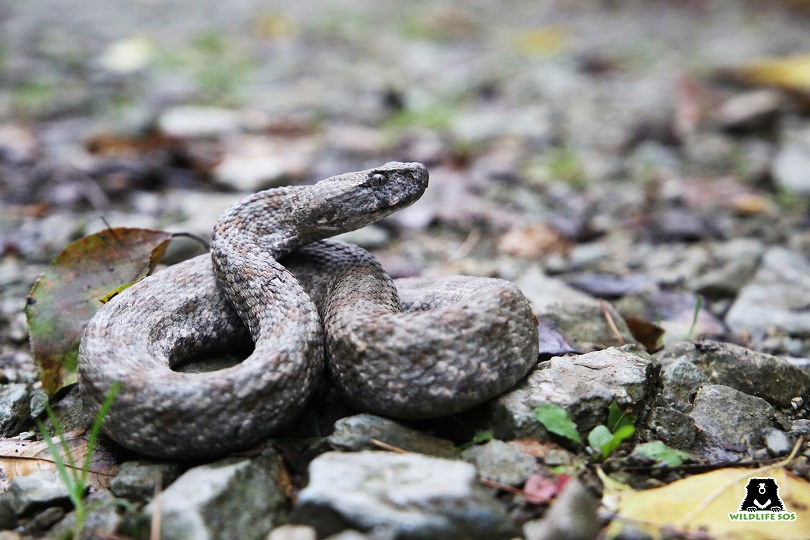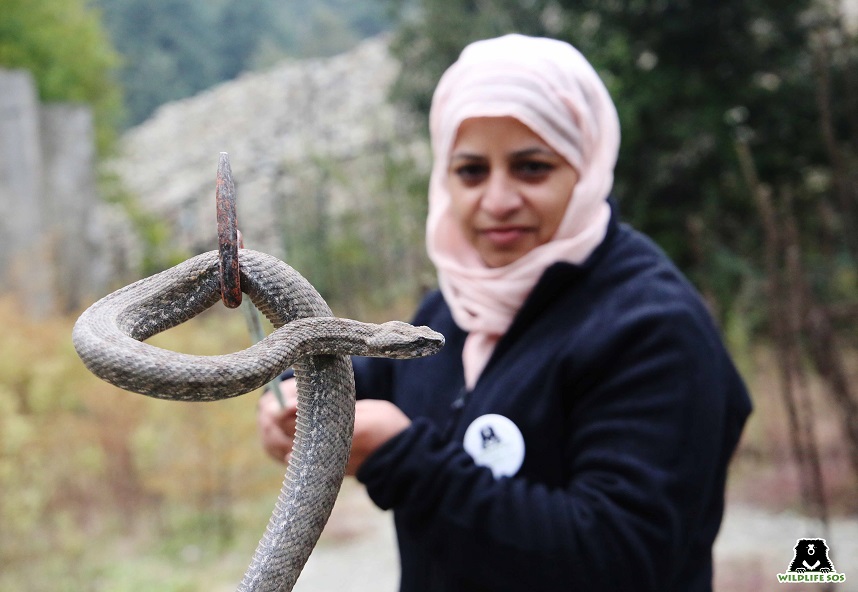
Srinagar-Even as the heavy downpour last week forced people in Kashmir Valley to take out woolens in the month of June, the rise in temperature and less rainfall in the recent months has led to increased snake sightings across Jammu and Kashmir, according to a report by Wildlife SOS.
Wildlife SOS (WSOS) is a non-profit charity established in 1998 with the primary objective of rescuing and rehabilitating wildlife in distress across India.
The report says that there has been a considerable hike in the number of snake rescues conducted by conservation NGO, Wildlife SOS this year as compared to last year.
“In the month of April, a nearly four-foot-long Levantine Viper was found inside a residential area in Srinagar within the Zabarwan Forest Range,” the report says.
The panicked residents who spotted the snake in their garden immediately informed the Wildlife SOS Rapid Response Unit.
The report further adds that, after an hour-long operation conducted by Aaliya Mir, Kashmir’s first and only female snake rescuer, the venomous snake was carefully extricated in what was the season’s first viper rescue.
 The viper was rescued and released by Wildlife SOS
The viper was rescued and released by Wildlife SOS
It adds that another Levantine Viper was rescued from the mess of a government office.
“This species is known as ‘Gunas’ in the local language feeds on rodents, lizards and birds, and is found in the mountainous regions of Jammu and Kashmir,” it reads.
Aaliya Mir, Education Officer and Programme Head- Jammu and Kashmir, Wildlife SOS said “Our helpline starts receiving snake rescue calls generally from the month of May, with the arrival of summer. But this year, due to the excessive heat and the lack of rainfall, there is a high probability that the hibernation period (known as brumation) of the snakes was shorter, forcing them to come out of their burrows earlier.”
The report says, since snakes are ectothermic animals (cannot regulate their internal body temperature), they do not come to the surface during the colder months of March and April. They remain underground to keep themselves warm, and only surface in summers for natural sunlight and heat.
Kashmir usually experiences rainfall in the months of March and April, followed by summer in May and June. But human-induced climate change resulted in a quick switch from winter to summer this year.
Kartick Satyanarayan, Co-founder and CEO, Wildlife SOS said, “Our team has conducted numerous awareness drives to educate people about the causes of increased snake sightings due to factors like climate change and rapid urbanisation. Because of these efforts, there has been a palpable shift in people’s attitude towards snakes and other wildlife.”
The month of May also saw a considerable rise in snake sightings with a total of 24 snake rescues, which kept our rescue team busy.
A nearly six-foot-long Himalayan Trinket Snake got injured in a conflict situation in the Zabarwan Forest Range area of Jammu and Kashmir when the reptile was spotted.

“A few people attempted to chase it away using either a stick or a sharp object, which injured the snake on its neck,” Mir said. The snake’s injuries were treated with topical medication and once found fit, it was safely released back into the wild.
In some rare cases, the NGO said it also encounters snake species like the common Sand Boa which is not native.
“It was suspected to have boarded a transport or goods carrier truck coming from another state,” it adds.
Follow this link to join our WhatsApp group: Join Now
Be Part of Quality Journalism |
Quality journalism takes a lot of time, money and hard work to produce and despite all the hardships we still do it. Our reporters and editors are working overtime in Kashmir and beyond to cover what you care about, break big stories, and expose injustices that can change lives. Today more people are reading Kashmir Observer than ever, but only a handful are paying while advertising revenues are falling fast. |
| ACT NOW |
| MONTHLY | Rs 100 | |
| YEARLY | Rs 1000 | |
| LIFETIME | Rs 10000 | |











